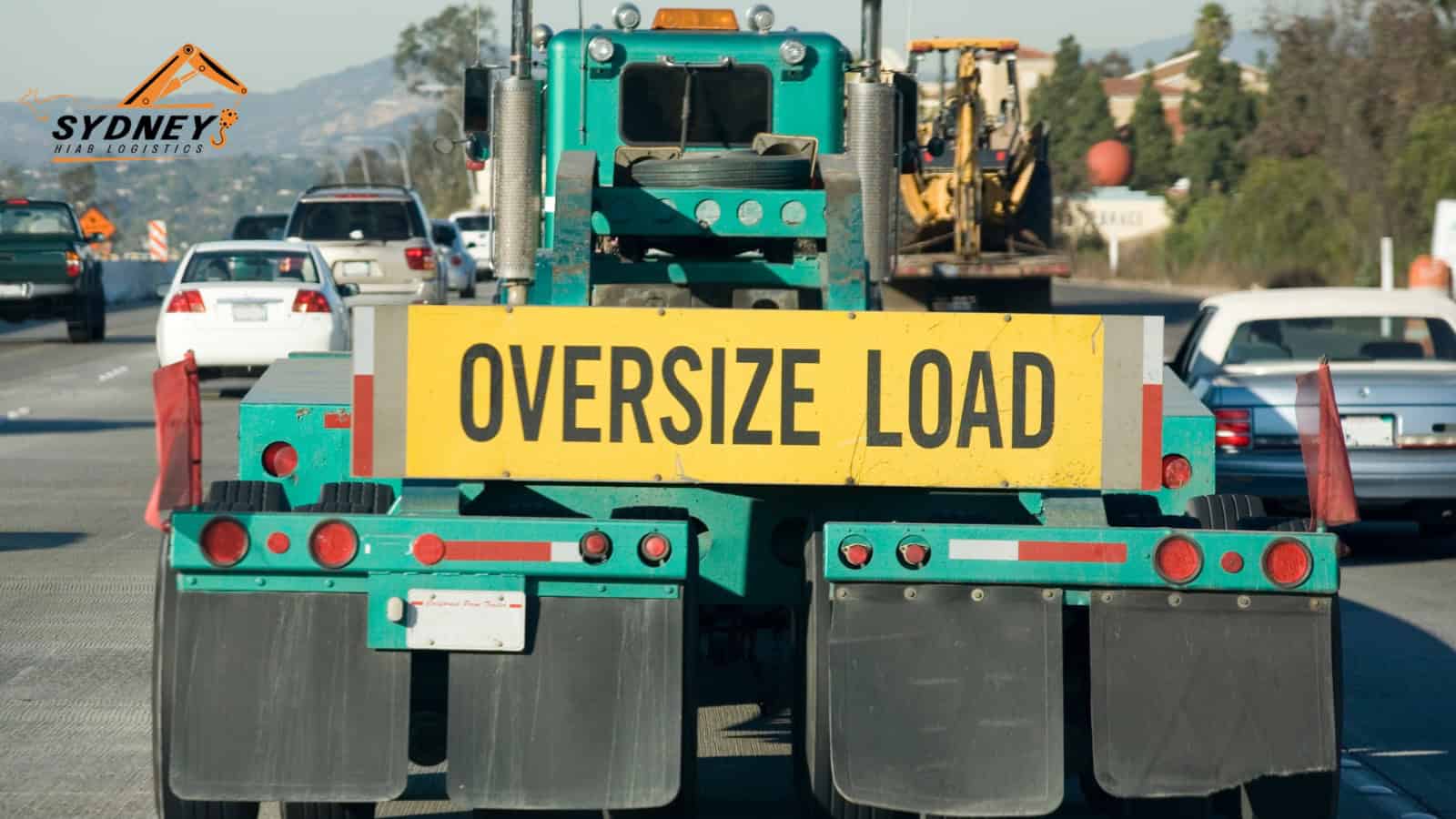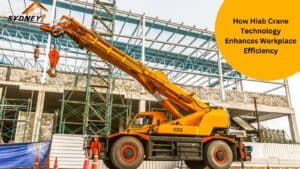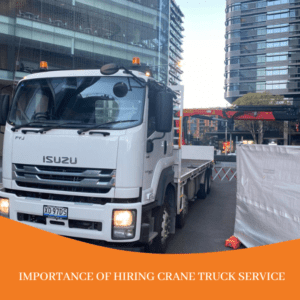Are you wondering how to safely move really big things from one place to another? Well, that’s where Hiab cranes come in! Hiab cranes are like giant arms attached to trucks that can lift and carry heavy and oversized items, like construction materials or machinery. But moving these huge loads isn’t as simple as just picking them up and driving off. There are lots of things to consider to make sure everything goes smoothly and safely. That’s why in this article, we’re going to talk about the best ways to transport oversized loads using Hiab cranes. We’ll cover everything from planning the route to securing the load properly. So if you’re curious about how it’s done, keep reading!
What are Hiab Cranes?
Hiab cranes, also known as truck-mounted cranes, are versatile lifting machines commonly used for loading and unloading heavy cargo. They are mounted on trucks, allowing for mobility and flexibility in various job sites. Hiab cranes come in different sizes and configurations to accommodate different load capacities and reach requirements.
Importance of Safety in Transporting Oversized Loads
When it comes to moving really big things, safety should be the number one concern. Why? Because accidents during transportation can be really bad. They can cause serious injuries to people, damage to the cargo, and even harm the roads and bridges we rely on. That’s why following safety rules is super important. Not only does it keep everyone safe, but it also helps avoid expensive delays and problems. By sticking to safety protocols, we can protect both people and property. So, whether it’s securing the load properly or planning the route carefully, safety always comes first when transporting oversized loads. It’s like wearing a seatbelt in a car – it might seem like a hassle, but it keeps us safe in case something goes wrong.
Factors to Consider Before Transporting Oversized Loads with Hiab Cranes
Starting on the transportation of oversized loads with Hiab cranes requires careful consideration of several critical factors:
Load Weight and Dimensions
It’s crucial to ensure that the weight and dimensions of the load meet legal regulations and fall within the crane’s lifting capacity. Overloading can strain the crane, jeopardizing its stability and potentially leading to accidents. Therefore, before loading the cargo onto the crane, it’s essential to double-check its weight and dimensions to avoid any risks.
Route Planning
Planning the transportation route is another vital aspect to ponder beforehand. Factors such as road conditions, clearance heights, and potential obstacles along the way must be taken into account. It’s crucial to avoid routes with sharp turns, low bridges, or narrow passages that may pose challenges for the oversized load. By meticulously planning the route, potential hazards can be mitigated, ensuring a smoother and safer journey.
Permits and Regulations
Obtaining the necessary permits and approvals for transporting oversized loads is imperative. Different jurisdictions have varying regulations governing the transportation of oversized cargo. Failure to comply with these regulations can result in fines, delays, or even legal consequences. Therefore, it’s essential to thoroughly research and obtain the required permits from local authorities before commencing the transportation process. By adhering to permits and regulations, potential complications can be avoided, and the transportation process can proceed seamlessly and lawfully.
Preparing for Transportation
Before setting out to transport oversized loads with Hiab cranes, thorough preparation is crucial for a safe and successful journey:
Inspecting the Load and Crane
It’s essential to conduct a comprehensive inspection of both the load and the crane to ensure they are in optimal working condition. This involves carefully checking for any signs of damage, wear, or malfunction that could compromise safety during transportation. Inspecting the load ensures that it is securely positioned and properly balanced on the crane, while assessing the crane’s condition guarantees that it is capable of handling the weight and requirements of the load. By identifying and addressing any potential issues beforehand, the risk of accidents or complications during transportation can be significantly reduced.
Securing the Load Properly
Properly securing the load is paramount to prevent shifting or falling during transit. Utilizing appropriate restraints, such as chains, straps, or braces, is essential to ensure that the load remains stable and secure throughout the journey. Distributing the weight evenly across the crane further enhances balance and stability, minimizing the risk of tipping or tilting. Additionally, securing the load in accordance with safety regulations and best practices ensures compliance with legal requirements and mitigates the possibility of accidents or damage to the cargo. By taking the time to securely fasten the load before departure, you can ensure a safer and more efficient transportation process.
Tips for Safe Transportation of Oversized Loads with Hiab Cranes
Ensuring the safety of oversized loads and crew during transportation is paramount. Here are some essential tips to follow:
Maintaining Proper Balance
Constantly monitor the balance of the load throughout the journey. Adjust as necessary to prevent tipping or tilting, which could jeopardize the safety of the crane and the cargo. Distribute the weight evenly across the crane to maintain stability, and avoid making sudden movements that could destabilize the load. By keeping a close eye on the balance and taking proactive measures to maintain stability, you can significantly reduce the risk of accidents during transportation.
Monitoring Weather Conditions
Stay vigilant by staying updated on weather forecasts and road conditions along the planned route. Avoid traveling during inclement weather, such as heavy rain, snow, or high winds, as these conditions can adversely affect the stability of the crane and increase the likelihood of accidents. By exercising caution and adjusting travel plans accordingly based on weather conditions, you can minimize risks and ensure a safer transportation process for everyone involved.
Communication Among Team Members
Effective communication among team members is crucial for ensuring a smooth and safe transportation process. Maintain clear and constant communication using radios, hand signals, or other means to coordinate movements and ensure that everyone is aware of their roles and responsibilities. By fostering open communication and teamwork, potential hazards can be identified and addressed promptly, enhancing overall safety and efficiency during transportation.
By adhering to these tips and prioritizing safety at every step of the transportation process, you can minimize risks and ensure a successful journey for oversized loads and crew alike.
Common Challenges and How to Overcome Them
Transporting oversized loads with Hiab cranes can present various challenges, ranging from navigating narrow access roads to dealing with overhead obstacles and tight spaces. To overcome these hurdles, it’s crucial to employ experienced operators and spotters who are skilled at maneuvering through difficult terrain safely. These professionals possess the expertise and knowledge needed to assess the situation and make informed decisions to ensure the smooth and efficient transportation of oversized loads.
Additionally, investing in specialized equipment, such as low-profile trailers or extendable cranes, can provide solutions for navigating tight spaces or overcoming height restrictions. By addressing challenges proactively and utilizing the right resources, you can mitigate risks and ensure the successful transportation of oversized loads with Hiab cranes.
Benefits of Using Hiab Cranes for Transporting Oversized Loads
Despite the challenges, using Hiab cranes offers several advantages, including:
Versatility: Hiab cranes are incredibly versatile machines capable of lifting and maneuvering heavy loads in diverse settings. Whether it’s a construction site, a remote location, or an urban area with limited space, Hiab cranes can adapt to different environments and handle a wide range of tasks with ease.
Efficiency: Thanks to their advanced hydraulic systems and precise controls, Hiab cranes enable quick and efficient loading and unloading of oversized cargo. Their ability to precisely position and manipulate heavy loads significantly reduces handling time, leading to increased productivity and streamlined operations.
Cost-effectiveness: Utilizing Hiab cranes for transporting oversized loads can result in significant cost savings for businesses. Compared to traditional lifting methods, such as using manual labor or other lifting equipment, Hiab cranes require fewer personnel and less time to complete tasks. This reduction in labor costs, coupled with minimized downtime due to their efficiency, translates into overall savings for businesses in terms of both time and money.
By leveraging the versatility, efficiency, and cost-effectiveness of Hiab cranes, businesses can enhance their transportation capabilities and optimize their operations for greater productivity and profitability.
Transporting oversized loads with Hiab cranes requires careful planning, preparation, and adherence to safety protocols. By following best practices and utilizing the capabilities of Hiab cranes, businesses can ensure the safe and efficient transportation of heavy and bulky items to their destination.
FAQs
Q: Can Hiab cranes transport oversized loads over long distances?
A: Yes, Hiab cranes can transport oversized loads over long distances, provided that proper route planning and permits are obtained to comply with legal regulations.
Q: Are there weight limits for the loads that Hiab cranes can transport?
A: Yes, Hiab cranes have specific weight limits depending on their lifting capacity and configuration. It’s essential to ensure that the load weight does not exceed these limits to maintain safety during transportation.
Q: How do I know if my load requires specialized permits for transportation?
A: The requirements for permits vary depending on factors such as load dimensions, weight, and transportation route. It’s advisable to consult with local authorities or transportation agencies to determine the necessary permits for your specific load.
Q: What safety measures should be in place when operating Hiab cranes for transporting oversized loads?
A: Safety measures include conducting pre-operation inspections, properly securing the load, monitoring weather conditions, and maintaining clear communication among team members throughout the transportation process.
Q: Are there alternative methods for transporting oversized loads besides using Hiab cranes?
A: While Hiab cranes are a popular choice for transporting oversized loads due to their mobility and lifting capabilities, alternative methods such as specialized trailers or heavy-duty forklifts may also be used depending on the specific requirements of the load and job site.




